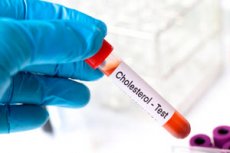The more cholesterol, the more pain.
Last reviewed: 07.06.2024

All iLive content is medically reviewed or fact checked to ensure as much factual accuracy as possible.
We have strict sourcing guidelines and only link to reputable media sites, academic research institutions and, whenever possible, medically peer reviewed studies. Note that the numbers in parentheses ([1], [2], etc.) are clickable links to these studies.
If you feel that any of our content is inaccurate, out-of-date, or otherwise questionable, please select it and press Ctrl + Enter.

Certain lipids in the cell structure - including cholesterol - prevent the inclusion of ion channels in nerve cells that could take away pain.
The rapid transformation of a mechanical action into a biological impulse helps cellular structures to respond to such environmental effects.
The body has it all figured out: if pain, it should subside as soon as the cause disappears. For example, a person bruised and in the absence of serious injuries, the pain gradually subsides. In such a situation, the pain syndrome acts as a kind of signal indicating possible danger.
It is also known that not all people have the same sensitivity to pain. And, if we do not consider this issue at the molecular level, what could be the point?
The moment of pain is the period of conduction of a nerve oscillation that continues from the bruised (damaged) area to a certain part of the brain. To ensure this process, the nerve cell membrane must rearrange ions. In the case of receptors, this rearrangement is caused by external influences. Nerve cell membranes contain a specific protein passage for ions that acts as an anesthetic agent. This passageway contains the activating enzyme phospholipase, which is activated when it is needed to soothe pain.
Since both the first and second proteins "hide" in the membrane, it matters what they interact with. There are various lipids, including saturated fatty acids and cholesterol, which form something similar to clots framed by another category of lipids. The activating enzyme seems to "dock" to these clots and "rest" until the moment of mechanical action by binding to another lipid, with which it triggers an analgesic ion passage.
By tracing the above pulse band, we can explain why a person tries to rub the sore spot thoroughly after an injury. Moderate pressure on the painful area promotes the activation of analgesic auxiliary molecules. At the same time, cholesterol complicates such activation: it becomes difficult for the enzyme to "peel off" from dense lipids. It is likely that people with strong pain sensitivity have some lipid metabolism disorders, which may be associated with diabetes mellitus, age-related changes and so on.
Perhaps now scientific experts need to think about developing new drugs capable of acting on "interference" in the form of lipid complexes in cell membranes, as well as on protein substances associated with them.
Full details of the study can be found on eLife magazine's page at
